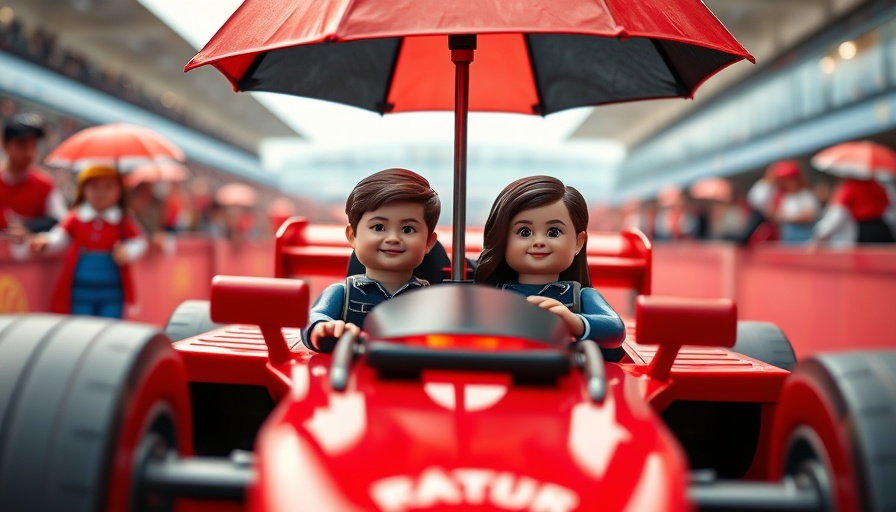
Revving Up Innovation: The Future of Experience Marketing
The recent unveiling of full-sized Lego Formula 1 cars during the Miami Grand Prix highlights how brands are leveraging creativity to enhance customer engagement. This initiative, a collaboration between Lego and Formula 1, showcases not only engineering marvels but also the importance of experiential marketing in a competitive landscape. By creating a tangible connection between a beloved brand and a globally recognized sport, Lego has set a precedent for experiential campaigns in various industries.
From Concept to Creation: The Engineering Challenge
Building these Lego replicas of real Formula 1 cars wasn't merely an artistic endeavor; it was a complex engineering project that took eight months and 26 highly skilled engineers. The team invested 22,000 hours to ensure accuracy, from the authenticity of Pirelli tires to the vehicles' overall structural integrity. This dedication underscores the meticulous attention to detail that companies must adopt in product development, particularly when creating experiences meant to stand out in crowded markets.
The Power of Collaboration in the Corporate World
Lego's partnership with Formula 1 illustrates the strengths found in collaboration. By working closely with each F1 team, Lego ensured that every detail of the cars was represented accurately. This level of cooperation not only fosters innovation but also strengthens brand loyalty amongst fans and stakeholders. As executives in various industries consider their own cross-sector partnerships, this case provides a compelling model for exploring symbiotic relationships aimed at mutual growth.
Embracing Full-Sized Creativity: A New Benchmark
The drivers' parade featured cars capable of only 12 mph, a striking contrast to the high speeds associated with professional racing. This unique characteristic underscores how full-sized builds can still captivate audiences regardless of performance limitations. For businesses, it demonstrates that creativity and engagement can often take precedence over conventional expectations of performance.
Lessons in Marketing: The Experience Matters
In an age where consumers demand experiences over products, Lego’s initiative succeeded because it created a sensory-rich encounter for both attendees and viewers alike. The auditory thrill of revving engines combined with the visual spectacle of vibrant colors and intricate designs made all the difference. For business leaders, this serves as a reminder of the necessity of placing consumer experience at the forefront of strategy development.
Inventive Branding: The Potential Beyond Toys
While Lego is traditionally seen as a children's toy company, this collaboration positions the brand within broader conversations about technology, precision engineering, and automotive innovation. Companies should thoughtfully consider how they can pivot their brand narratives to engage diverse audiences, enhancing relevance while exploring new markets.
As this collaboration showcases, the boundaries between play, innovation, and marketing continue to blur, urging executives to embrace creativity and redefine their approaches to engage consumers meaningfully.
 Add Row
Add Row  Add
Add 




Write A Comment